
Compact RVs Pros and Cons
Last year Ashley and I were able to spend some quality time on the road in the Travato. This year, we're mixing it up a little and trying a compact towable, the Micro Minnie 1706FB. They're very similar in many respects -- both comfortable and very livable compact RVs, but also very different from a drivable vs towable standpoint. If you're debating which way to go, here's a list of pros and cons of each from our experiences so far.

1) Livable Space. The Travato had everything a couple needs for life on the road -- functional kitchen, comfortable bed, small table/workspace, bathroom, etc. The Micro Minnie does too, but a little roomier. There's more interior storage cabinets, more kitchen space (and adds a fully functional oven), larger full bath with separate toilet and shower space, and a slightly bigger bed. Both share nice stereo/TV/DVD system. Both share a comfortable bed for two, plus a dinette table that converts to another bed. Overall, I'd have to give a slight nod on livable space to the Micro Minnie.
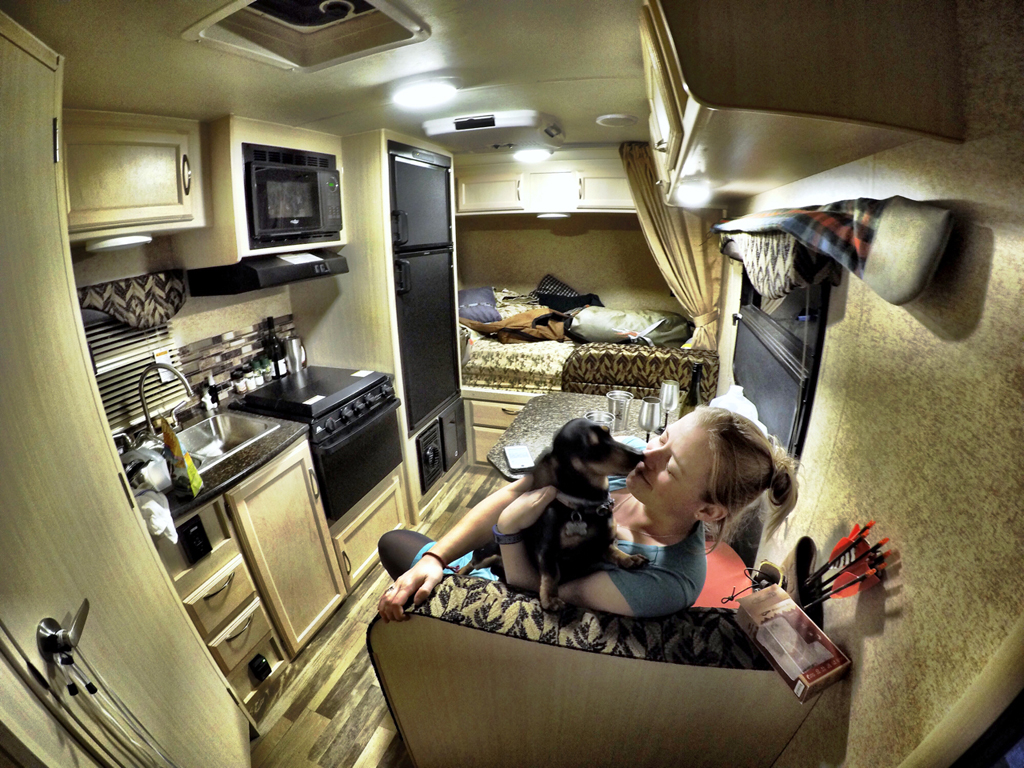
2) Storage. This was one of the main drivers of wanting to try a towable in the first place -- we live 'gear intensive' lives. Whether it's fly fishing, kayaking or weekend archery events, we're always going somewhere to do something, which means 'stuff' is going with us. Often that stuff ends up being wet, sandy gear. Having to store that in your living space means sand gets everywhere, including your bed, even if you have plastic trunks to store it in. The second big driving factor was kayak storage. Getting heavy fishing kayaks on and off the roof of the Travato was a careful exercise. Being able to put them on the roof of the RAM Rebel pulling the RV is just SO much easier. With the Micro Minnie, we can keep all the wet, sandy, stinky gear in the back of the truck, out of our way and living area. It also has the storage bay with external doors, so even if we do put gear in the RV, it's not in the way at all. A big nod in storage space goes to the Micro Minnie + truck system.

3) Exterior Features. Both the Travato and Micro-Minnie share common features for comfortable outdoor living. Powered-awnings that deploy quickly and easily, exterior speakers, a propane hook-up for outdoor cooking, water/power ports. Setting up camp is always fast and easy. The powered jack on the towable makes connecting and disconnecting from a ball quickly and easy, especially with the backup camera on the Rebel making it easy for me to do alone. Adding a hitch-haul for an Orion cooler on the back is easy on both, and the Travato has the roof rack system for more exterior storage. The Travato's doorstep is powered, but the manual step on the Micro is easy to deploy. Waste discharge is easy on both. Both have exterior spray nozzles to wash the salt off kayaks, muddy boots, or muddy dogs. They both look great and exude quality and receive compliments from random strangers at gas stations. Overall, exterior features are a tie.

4) Electrical Power. One big difference between the Travato and Micro-Minnie is the power factor. They're equal when plugged into 30A campsite power, but the built in generator on the Travato gives it a big edge for off-grid living. If it's hot, and we need to leave Tripper in the Travato, we could turn on the generator and run the AC -- something we can't do with the Micro Minnie. We did buy portable Honda generators (EU2000i and Companion) that conveniently fit in the under storage compartment and when chained together provide full functionality for off-grid camping. The battery system on the Travato seems to last longer and is also easily recharged from the generator with the push of a button vs having to set up external generators. We can keep the Micro Minnie's batteries charged up using Goal Zero solar panels though once at camp. Overall, the power edge goes to the Travato.
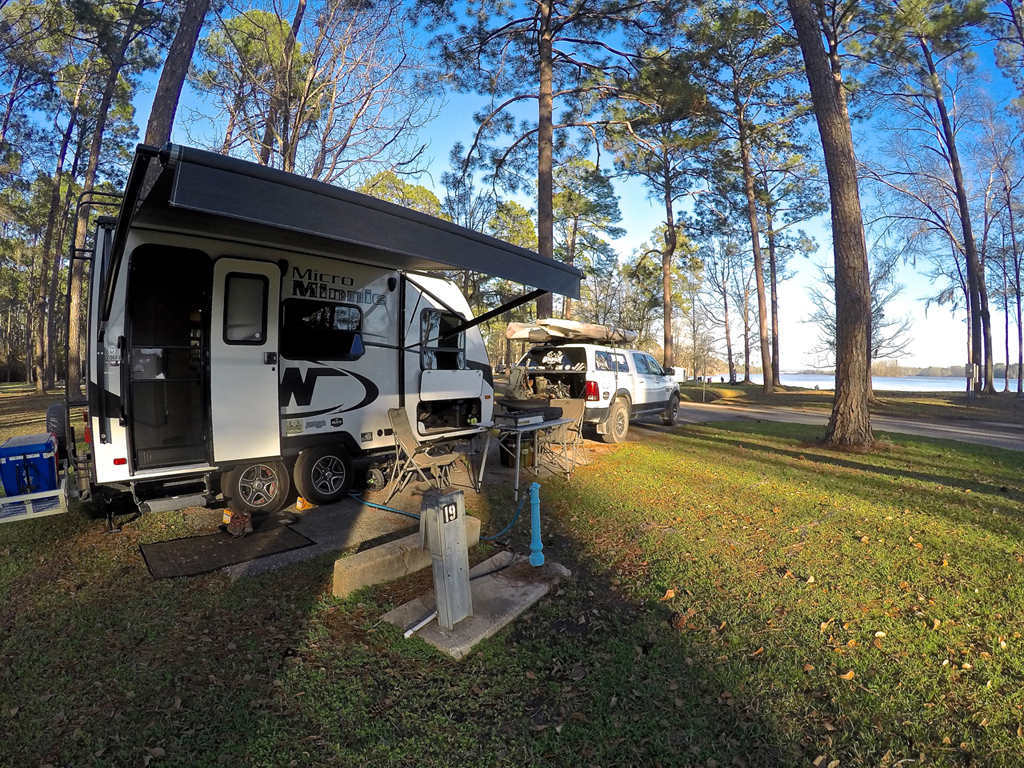
5) Propane. Both the Travato and Micro Minnie have propane stoves and can run the fridge/freezer on both electric or gas. Both have an external quick disconnect LP port, so you can use the RV propane to cook on a properly equipped camping stove outside, like the Ranger Stove from Camp Chef. The big difference that stands out is monitoring the LP levels. The Travato has sensors and you can monitor levels from the control panel. The Micro Minnie has two external tanks with a switch valve. When one runs out, you switch to the other full one knowing you have to get the original tank re-filled before the second ones runs out. That works, but being able to monitor the levels is nice. There is a big difference in capacity though to counter that, with 6 lbs in the Travato, but either 20 or 40 on the Micro Minnie. The Micro's heater unit is propane and quickly warms it up on cold mornings. Overall, propane functionality is a tie for us so far.
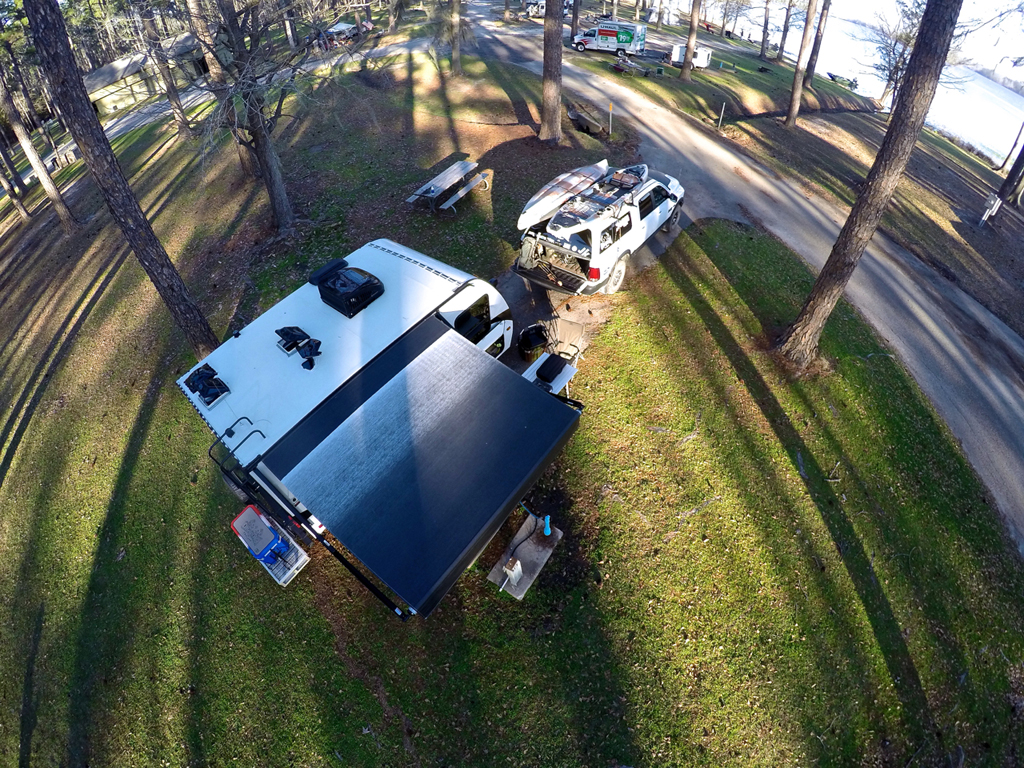
6) Maneuverability. This is a big and obvious one and key to any shopping decision between a drivable vs towable RV. Having a driver who is comfortable towing -- making turns, backing it up, etc. is a big factor because not everybody is. The Travato is so easy to maneuver, even parallel park in crowded downtown streets. With a towable as compact as the Micro Minnie, it still changes the way you choose gas stations, stop to get food, and just decide where you can and can't go. The Travato gets a big edge on maneuverability.
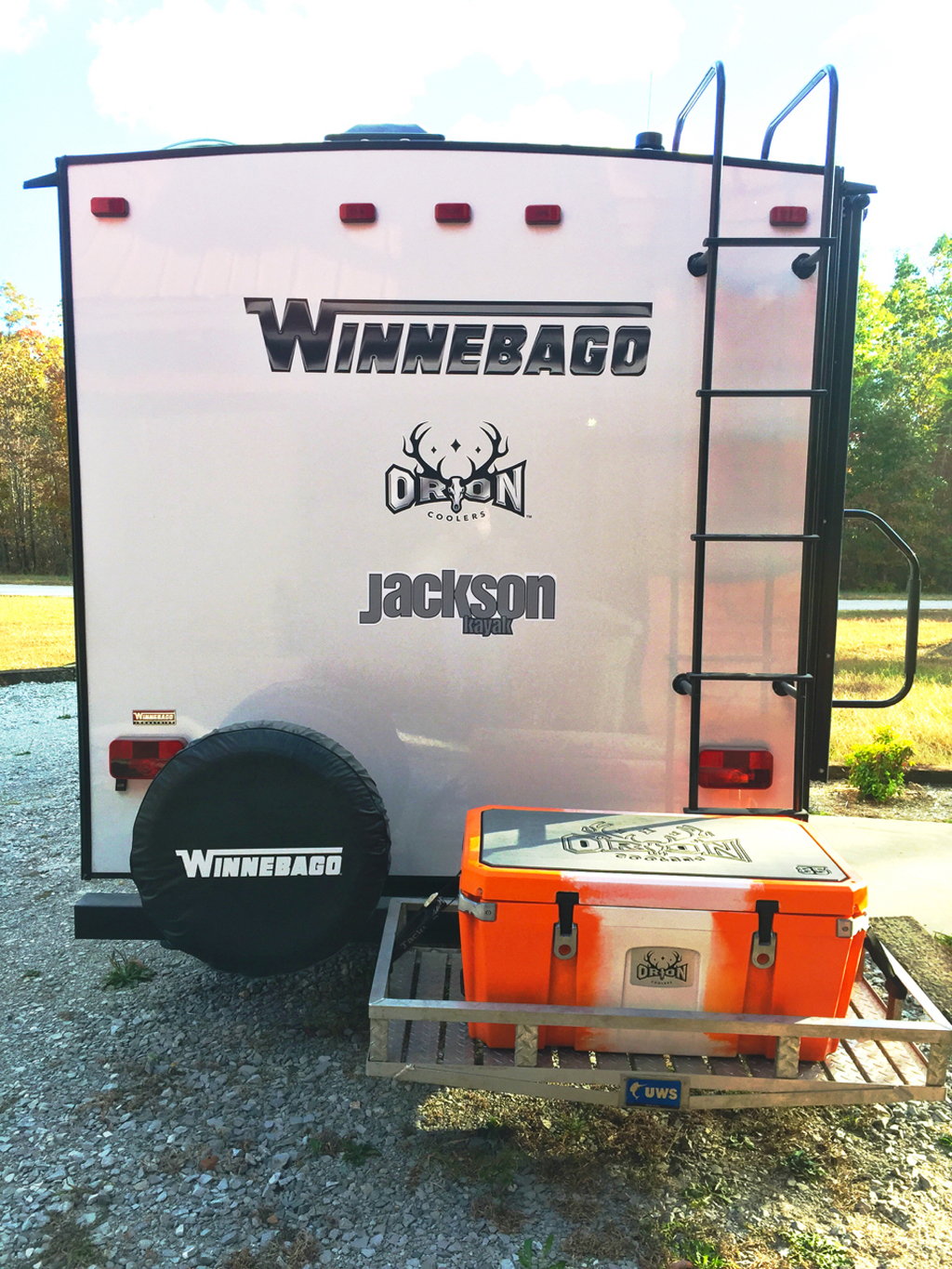
7) Flexibility. This is a combo of driving style, camping style, and overall lifestyle. We bounce around -- a lot, so that's a lot of camp set ups and break downs. We've never camped at one place for more than a week. Ashley is often working from the RV while I'm out testing product, doing a trade show, or chasing fish around with a fly rod. If I have to set up a river shuttle to kayak fish from point A to point B, life in a Travato means I have to break down camp, move the RV, interrupt her work schedule, etc. With the towable, I can leave her comfortably in camp and do what I have to do without disturbing her or having to break down camp. This is really a lifestyle preference based on your work and recreation habits, but for us, the flexibility edge goes to the towable.
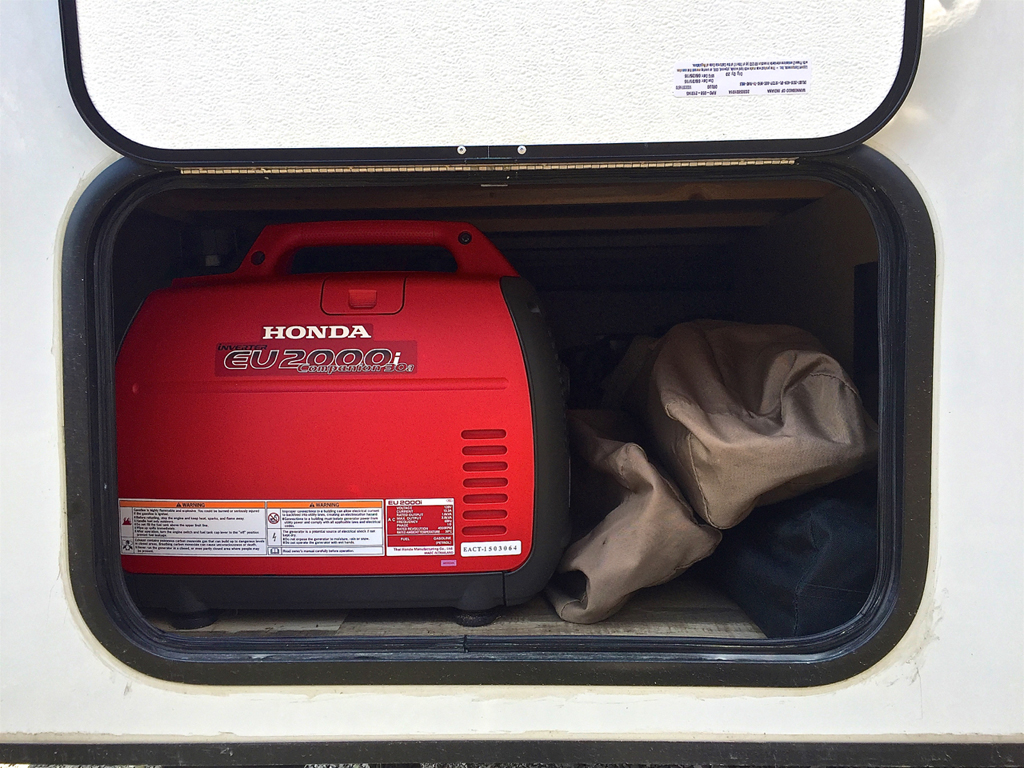
8) Fuel Economy. The Micro Minnie 1706FB is light (3000lb dry weight), but it's still a trailer, which means gas mileage will suffer. We regularly averaged 18-20 mpg in the Travato, but that number falls to 10-12 mpg with the RAM Rebel + Micro Minnie combo. Both on regular unleaded. The fuel economy advantage undoubtedly rests with the Travato.

9) Road Worthiness. Both the Travato and Micro Minnie are quality RV's ready for continuous tours across the country and back. But, there are certain factors to consider based on the places you like to go and things you like to do. For us, that involves a lot of dirt roads and off-grid camping. The risk of flat tires is inherently higher than all-paved driving, and there's often no cell coverage to call AAA. The dual-axles on the Micro Minnie mean I have a stable platform, with extra 'insurance' tires, plus there's a spare on the rear bumper. I can blow one of the four and still limp slowly along if I had to. If one blows on the highway, I'm less likely to lose control vs having a single tire on one side. My Rebel and Micro Minnie have better ground clearance overall for going over rocks or roots or other obstacles than the Travato. The Travato's generator hangs pretty low and would be an expensive repair if damaged. So this category is once again defined by your personal lifestyle and preferences, but for us, the 'trail' worthiness edge goes to the Micro Minnie.

10) Cost. You can't make value comparisons without costs, and the difference on the initial surface is very big, but when you include other factors may not be as much. The Micro Minnie is around $20K depending on options, and the Travato is around $90K. So on the surface that's a $70K difference -- slam dunk for the Micro Minnie. But the Micro doesn't drive itself, so you have to factor in the cost of the truck or SUV pulling it. If you already own one capable, it's not really a financial factor at all, but if you're buying one to tow it, that's easily another $40K of cost. Then there's the generator factor -- throw another $2500 in if you want comparable off-grid electrical performance. So the reality is closer to $60K vs $90K. Sure, I'm ignoring the used vs new factor and you could buy an older, less reliable truck to pull your nice new trailer, but at an apples to apples, quality to quality comparison, there's still a significant difference, but maybe not as much as you'd initially think. Cost edge goes to the Micro Minnie.
There's 10 Pros and Cons of drivable versus towable RV's. Maybe they'll help you in your RV shopping decision-making process. Ultimately, which factors matter more to you versus the other boils down to personal preferences and lifestyle choices. The good news is that there are no wrong answers
The roads lead to adventures everywhere. It's up to you to have fun on them.
Comments
Comments on this post are moderated, so they will not appear instantly. All relevant questions and helpful notes are welcome! If you have a service inquiry or question related to your RV, please reach out to the customer care team directly using the phone numbers or contact form on this page .